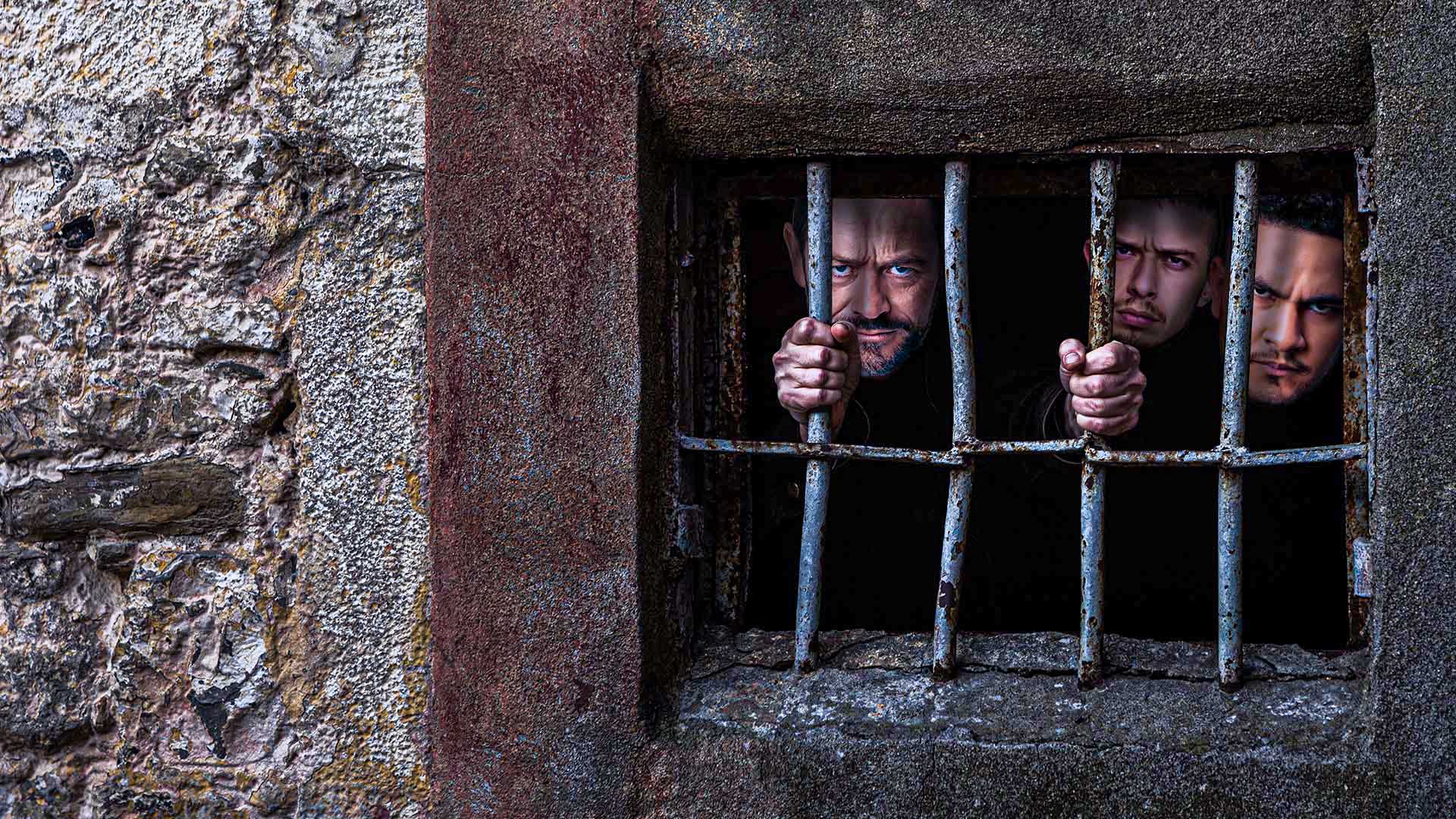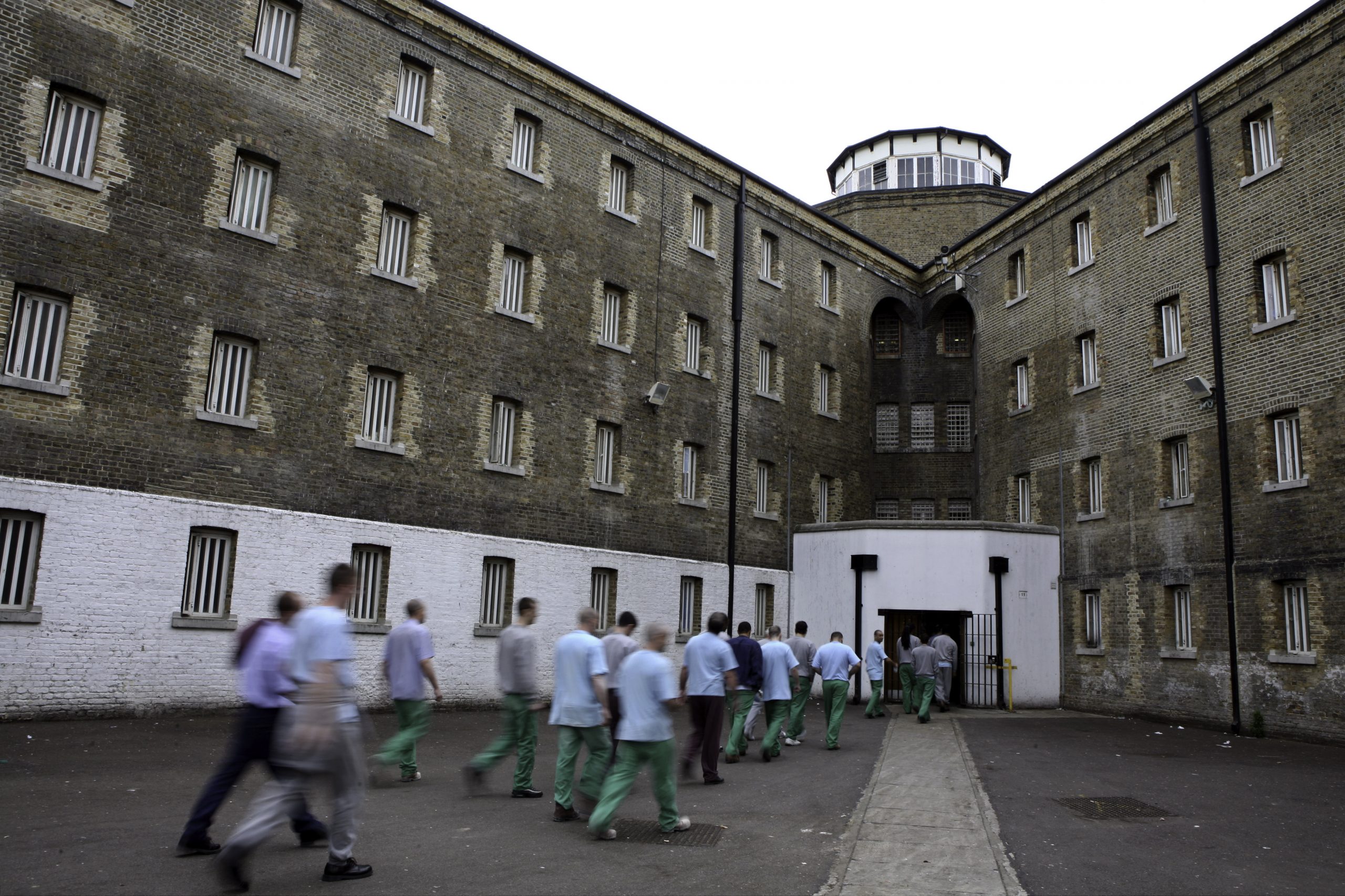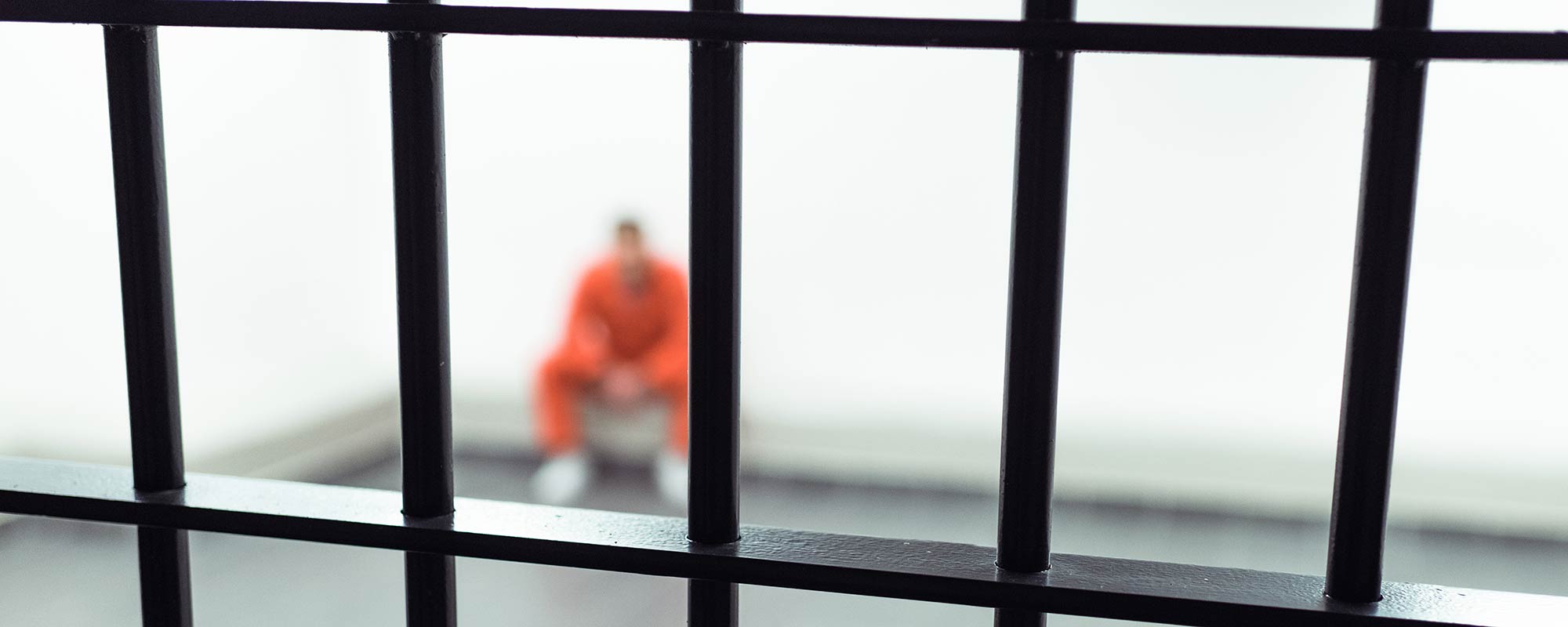Today, the size and living conditions of prison vary widely and are often tied to the criminals they house. Minimum security prisons in the United States and abroad might have comfortable beds, access to private bathrooms, and recreational and rehabilitation programs. In the United States, the rich and famous may even have the chance to serve their sentences in facilities upgraded with flat-screen TVs and other creature comforts, a controversial pay-to-play opportunity to ensure minimal discomfort while they serve their debts to society.
But there are prisons on the other end of that spectrum as well; they’re severely overcrowded, lack proper medical care, and put occupants at severe risk of violence. This list highlights 10 of those, in no particular order.
10. Black Dolphin Prison, Russia
Black Dolphin Prison (aka penal colony No. 6) is located near Russia’s border with Kazakhstan. It’s reserved for the country’s most dangerous and violent convicted criminals, including serial killers, cannibals, paedophiles and Chechen terrorists. It is named for the dolphin sculpture created by the inmates that sits on the grass at the front of the prison reception. Prisoners here are watched 24-hours a day via video surveillance, and guards make rounds every 15 minutes. Two inmates are assigned to each 50-square-foot (4.6 square-meter) cell that is behind three sets of steel doors to keep it extra-isolated from guards and other inmates. Prisoners are allowed outside their cells for only 90 minutes per day in a barren concrete exercise yard. If they’re moved anywhere within the facility, they’re cuffed, blindfolded and forced to walk bent over so they can’t learn the prison’s layout, interact with other prisoners or overpower the guards. This technique is believed to be unique to Black Dolphin.
9. Kamiti Maximum Security Prison, Kenya
Kenya is notorious for tough conditions in its prisons and Kamiti Maximum Security Prison, located in Roysambu Constituency, is widely regarded as the worst. It was built in 1954 by the British and modelled after an old-style colonial system to house offenders during a state of emergency declared in October 1952. Kamiti still has its original gallows, though the last execution there was in 1987. It is notoriously overcrowded and the conditions are unsanitary — the prison’s official capacity is 1,200, though reports suggest there are between 1,800 and 2,500 inmates crammed inside. Serious health conditions, including HIV and AIDS, gonorrhoea, syphilis, tuberculosis and dysentery are rampant. Though Kamiti was already well-known for housing political prisoners and executions by hanging, its infamy grew in 2008, when a riot sparked by a contraband search was captured on cellphone and shown on television. It also made headlines again in 2021 when three convicted terror suspects escaped. Seven wardens were later arrested for helping aid their escape.

8. Terre Haute, U.S.A.
This prison complex in Indiana consists of maximum-security, medium-security and low-security units. Nicknamed “Guantanamo North,” Terre Haute is home to Boston bomber Dzhokhar Tsarnaev, who is on death row there. (The United States federal government’s execution chamber is located at Terre Haute.) The ACLU accused Terre Haute in 2008 of having “grossly inadequate” conditions at its special confinement unit, where death row inmates are held. It accused the prison of denying the prisoners medical care and mental health services, and said they were subjected to so much noise that it caused them sleep deprivation. In January 2021, Terre Haute had the highest number of COVID-19 cases in the federal prison system, including inmates on death row. Federal executions at Terre Haute have been on pause since U.S. Attorney General Merrick Garland announced July 1, 2021, the Department of Justice would review its policy on capital punishment. This was after the Trump administration carried out 13 federal executions just months before the end of Trump’s term, including the execution of Lisa Montgomery by lethal injection Jan. 12, 2021. Montgomery was the first woman put to death by the U.S. in 67 years. Still, 46 men remain on death row at Terra Haute, including Dylann Roof, who was sentenced to death for federal hate crimes for killing nine church parishioners in Charleston, South Carolina in 2015.
7. San Quentin State Prison, U.S.A.
The oldest prison in California, San Quentin is notoriously known for its violence. It has been home to many infamous criminals, including Charles Manson, Scott Peterson and Sirhan Sirhan, who assassinated Robert F. Kennedy. It had the only death row facility in the state for more than 700 death row inmates (the largest facility in the United States), and home to California’s only gas chamber. But in early 2022, the state started the process of closing death row and relocating the inmates, three years after the California governor ended executions in the state. Over the years, and particularly in the 1960s and 1970s, San Quentin earned a reputation for corruption and interracial riots that were encouraged by the guards.
6. Diyarbakir Prison, Turkey
Diyarbakir Prison was built in 1980 by the Ministry of Justice in Turkey. After the Sept. 12, 1980, Turkish coup d’état, Diyarbakir became a martial law military prison where torture was a common tool for forced assimilation of the Kurds. A total of 650,000 people were detained after the September coup, and most were beaten or tortured. More than 500 died — many of those at Diyarbakir. During the “the period of barbarity,” which refers to the early and mid-1980s when Diyarbakır was newly built, prisoners there were subjected to horrific acts of systematic torture. Though rarely confirmed by superiors, hundreds of testimonies from former Diyarbakir inmates have told of physical and mental abuse; sleep, sensory, water and food deprivation; “Palestinian hangings” (hanging by the arms); mock executions; electric shocks to genitals; extraction of nails and healthy teeth; rape or threat of rape; and worse. These abuses to Kurdish prisoners fuelled the rise of the Kurdistan Workers’ party, or PKK, which still fights against the Turkish state. Today Diyarbakir is still a working prison and is known for its significant number of human rights violations per inmate. But in 2021, Turkish President Recep Tayyip Erdoğan announced it would be turned into a cultural centre, to mixed reviews.
5. Mendoza Prison, Argentina
With a population roughly three times its capacity, Mendoza Prison in Argentina is severely overcrowded. As many as five inmates are crowded into cells that measure only 43 square feet (4 square meters), and many inmates are forced to sleep on the floor without mattresses. Amnesty International reported on the conditions back in 2005, alerting that “people imprisoned in Mendoza are in such a desperate situation that they have gone as far as to sew their mouths up in demand of better living conditions.” The conditions at that time were so dire, they included torture and in some cases even death to inmates. Prisoners had inadequate medical care and the prison lacked a proper sewage system, forcing inmates no other choice but to use plastic bags and bottles as their washrooms.
4. Gldani Prison, Georgia
A 2012 scandal at Gldani Prison, located in Tbilisi, Georgia, called international attention to the country’s practice of prisoner torture at the hands of guards. Numerous abuses, including rape and assault, were revealed in video filmed by a 35-year-old former prison-guard-turned-whistle-blower. The videos sparked major protests across the country, and inspired actual reform in how inmates there are treated. Though conditions in the country’s prisons have improved in the past decade, Gldani Prison is in the spotlight once again as the site of protests sparked by the imprisonment of the country’s former president, Mikheil Saakashvili. Though various groups of protestors are both in favour of and against Saakashvili’s release, the situation is calling attention to the facility’s notoriety and reputation.

3. United States Penitentiary, Administrative Maximum Facility (ADX), USA
Also known as ADX Florence, Florence ADX, Supermax, or the Alcatraz of the Rockies, this is the most maximum-security prison in the United States. Built in 1994, this facility houses some of the world’s most dangerous criminals, including Ted Kaczynski (the Unabomber), Ramzi Yousef (responsible for the 1993 World Trade Center bombing), and Zacarias Moussaoui (involved in the 9/11 attacks). Inmates at this facility spend 23 hours a day in solitary confinement in their 7-by-12-foot (2-by-3.6-meter) concrete cells. Windows are tiny and prisoners get their meals through small slots in the cells’ metal doors. When prisoners are allowed out of their cells during the one-hour recreation period, they wear several restraints and are escorted by multiple guards to a small outdoor cage. The prison was once described by former warden Robert Hood as “a clean version of hell.”
2. Camp 14 Kacheon, North Korea
Near the middle of North Korea is a 60-square-mile (155-square-kilometer) prison facility known both as Camp 14 and Kacheon. According to reports by the U.S. Department of State, Camp 14 was built in 1959 near the centre of the country, about 40 miles (64 kilometres) north of Pyongyang. Camp 14 is considered a political prisoner camp and can hold 15,000 prisoners. That means they are serving life sentences for being “enemies of the state.” Inmates here are routinely starved, and forced into slave labour in mining, textiles and farming. Camp 14 also employs a policy known as “three generations of punishment,” which means many prisoners are there for merely being related to someone suspected of a crime—and they’ll likely will die there without ever committing a crime themselves.
1. Gitarama Prison, Rwanda
The most crowded prison in the world, Gitarama is home to more than 7,000 prisoners in a facility that was built to hold only 400. Most of the inmates are suspects of the Rwandan genocide that took place in 1994. Given the extreme overcrowding, the men and women housed here are forced to stand barefoot on the filthy ground for all hours of the day, causing their feet to rot. Many eventually require amputations, but with only one full-time doctor dedicated to the prison, most prisoners are unable to receive the treatment they need, resulting in half a dozen deaths each day.

